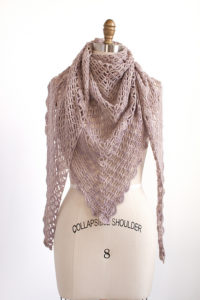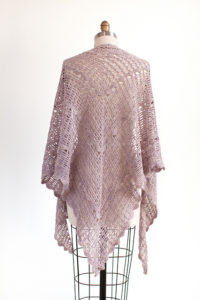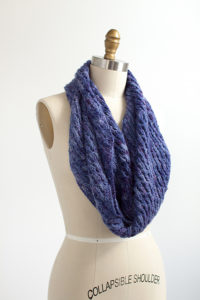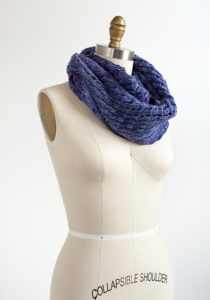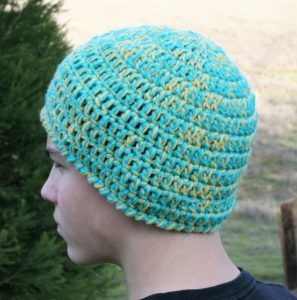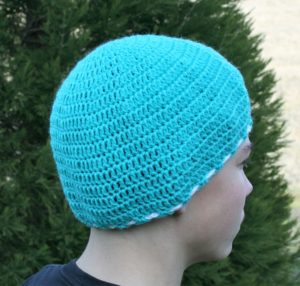 Thinking back I can remember it intimidating me the first time I tried it, but now it seems like nothing out of the ordinary. Using two strands of yarn, or more, at the same time now gives me no second thoughts.
Thinking back I can remember it intimidating me the first time I tried it, but now it seems like nothing out of the ordinary. Using two strands of yarn, or more, at the same time now gives me no second thoughts.
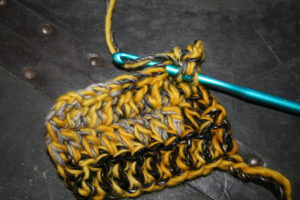 This practice of crocheting with more than one strand of yarn yields some really nice results. I may not use it all that often, but I like the look it creates an almost speckled effect. In some cases it helps two bold colors blend together.
This practice of crocheting with more than one strand of yarn yields some really nice results. I may not use it all that often, but I like the look it creates an almost speckled effect. In some cases it helps two bold colors blend together.
The best tip I can share is to simply treat the two (or multiple) strands as one. Hold them together as one, not worrying about if the colors twist together in your hand. This twist will lend to the effect. When you yarn over and pull your hook, use all the strands, really just treat them as one. After a short time it is easy to get into this rhythm, so don’t be afraid to treat it as such.
It does have some tendencies that can be a bit annoying, for instance keeping equal tension on two yarns can be challenging. This becomes a bit more obvious when I begin one yarn from a new center pull skein, and the other has been worked from a bit already. The new skein is tighter to pull from and this makes it a little awkward to ensure that I keep both strands under an equal tension. I personally correct this by pulling more yarn out of the new skein to more equally match the pull of the second skein.
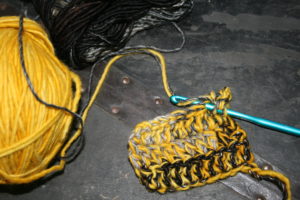 If I am using two yarns that are wound into balls the challenge becomes keeping them from rolling all over the place and becoming tangled together. There are a couple of tips to deal with this annoyance, I use two different yarn bowls that “trap” the balls and prevents them from “free rolling”.
If I am using two yarns that are wound into balls the challenge becomes keeping them from rolling all over the place and becoming tangled together. There are a couple of tips to deal with this annoyance, I use two different yarn bowls that “trap” the balls and prevents them from “free rolling”.
Another thing to keep in mind about using more than one strand of yarn is that the weight changes. It is not like adding the two weights together will double the weight or anything. By using two medium weight (number 4 weight) yarns does not create a super bulky or a number 8 weight yarn, but it does make a heavier weight, but more like a Bulky (number 6 weight) yarn. As a result you need to use a larger hook. Check out a Beyond Basics Hat, using two strands of baby yarn to create a fun hat here.
By ensuring that you have a proper size hook to accommodate both yarns you also ensure that the fabric has the drape you desire. Just as any project if you want a dense fabric use a smaller hook, if you want a more fluid fabric use a larger hook.
However I usually use yarns of differing weight together, I might accent a medium weight yarn with a light or even lace weight yarn. I might use a completely different fiber, might match a wool with a silk, an acrylic with a mohair, a cotton with an alpaca. The yarns provide a different texture, a different sheen, often a different color, but they always provide something amazing to look at.

